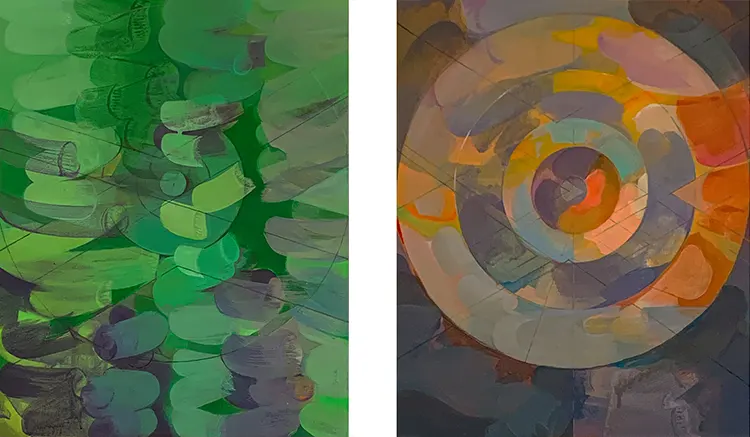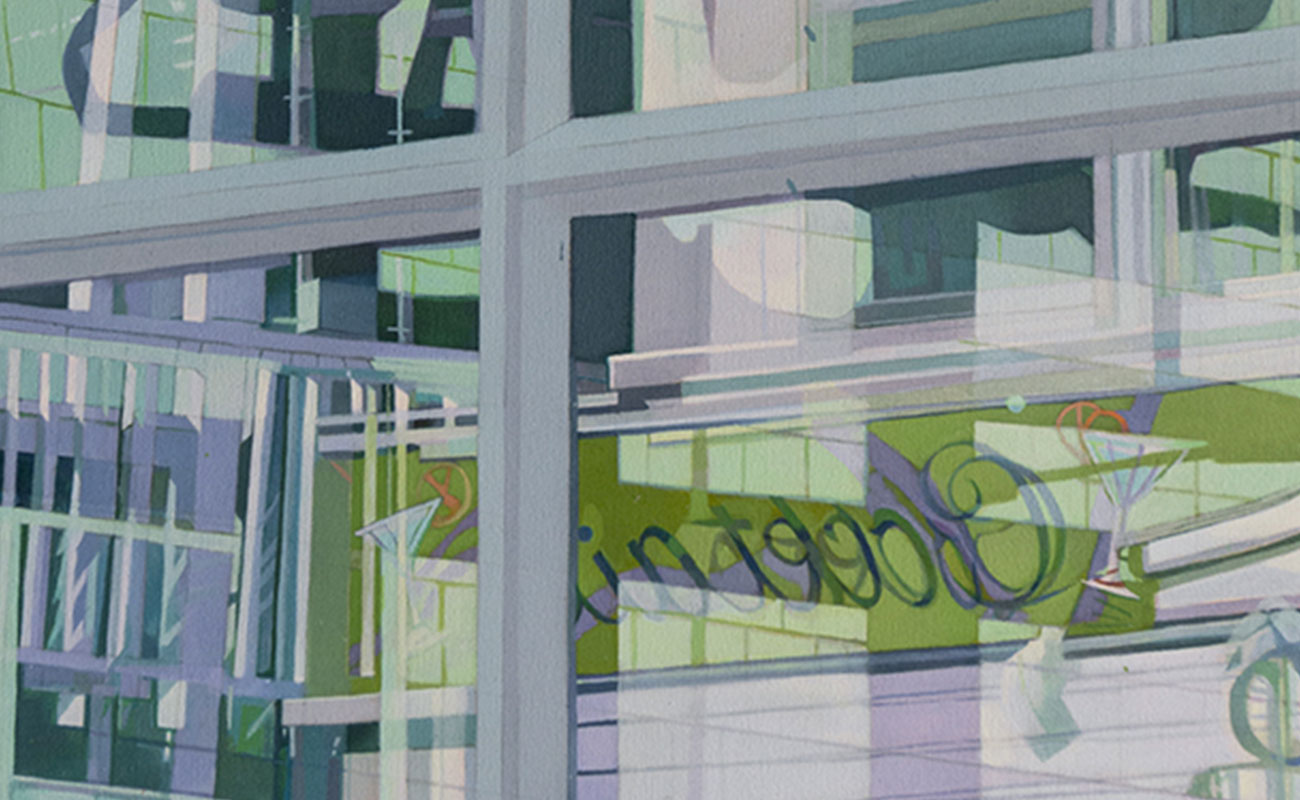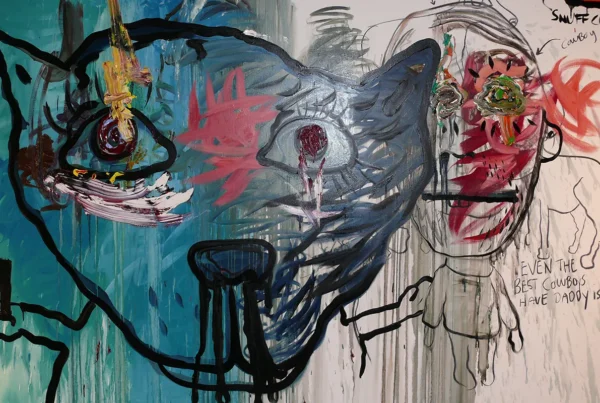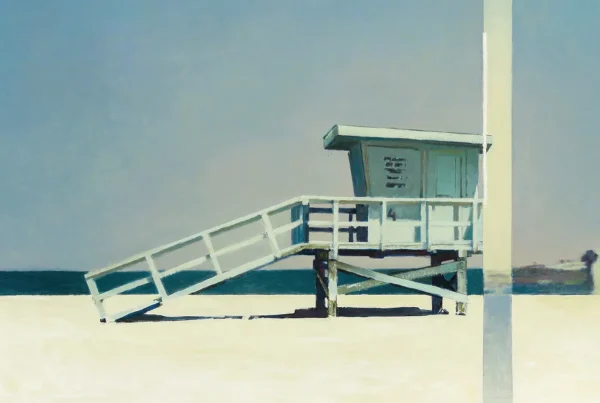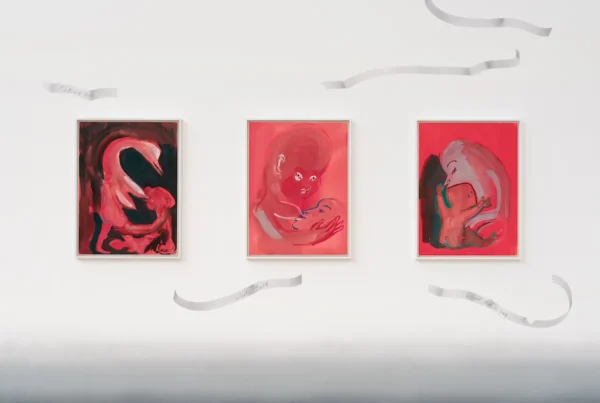“I see my paintings as stepping stones.”
Artistic Exploration
Susan Carson has lived in Connecticut for over two decades, but her origins lie in Philadelphia, where she spent her early years. Her exposure to her father’s architectural practice and her grandfather, Leon Karp’s renown as an artist painting family, friends, and mummers (a Philadelphia tradition), greatly influenced her professional path and the content of her art. Although Carson dabbled in drawing during her youth, her primary creative focus was music.
Carson entered Boston University as a piano performance major and completed her studies in four years, graduating in 1985 with a Bachelor of Arts degree in art history and urban studies. In her junior year, she discovered a love for graphic design through an elective course, enjoying the hands-on, creative problem-solving aspects of the discipline. At that time, computers were not widely used for graphics, and the design process was quite tactile, involving manual cutting and pasting techniques. Carson took the course multiple times to further develop her design portfolio.
After graduation, Carson began her professional career at The Philadelphia Museum of Art. Under the guidance of a skilled group of designers and editors, including the art director, she honed her design abilities. Collaborating on the production of collateral pieces and exhibition graphics for shows featuring renowned artists like Jasper Johns, Diego Rivera, and Diane Arbus, Carson found the experience both enriching and educational. She went on to thrive in the graphic design field for over two decades.
Today, Carson’s graphic design background heavily influences her approach to painting. She integrates various graphic tools and techniques into her art practice, such as using Photoshop to modify reference photographs for her works. She also frequently photographs her works in progress and digitally adjusts them to make informed decisions throughout the creative process.
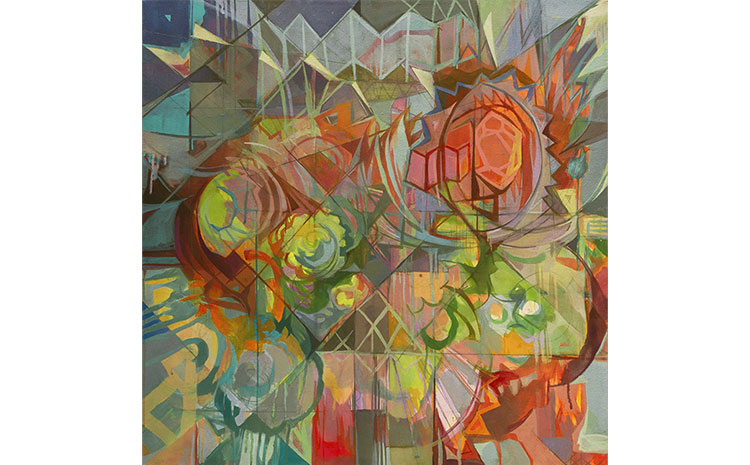
Susan Carson: Investigating Identity and Ambiguity through Abstract Realism
In Susan Carson’s art, architecture holds a significant position, with space, structure, and perspective serving as essential components in the development of her abstract creations. Carson carefully considers how viewers might perceive her paintings, whether from a bird’s eye view, a cross-section, or perhaps a combination of both perspectives.
Carson aims to achieve a striking visual aesthetic in her work, understanding that art can serve various purposes, from complementing home decor to conveying deeper concepts. At the same time, her creations delve into thought-provoking questions, such as determining how much an object or face can be omitted without losing its identity, and whether the resulting ambiguity holds its own allure. Duality frequently emerges as a theme in her abstract pieces, as she juxtaposes seemingly contrasting elements. In her series “Spontaneous Deliberation,” Carson harmonizes gestural, expressive brushstrokes with the discipline of geometric components, showcasing her preference for order amidst chaos.
Over time, Carson’s intuitive expression has matured into a more formal, contemplative practice centered on intention. Initially, she focused on portraiture, seamlessly connecting with her subjects, then interpreting her observations, and revealing essential qualities without conscious deliberation. However, as her artistic journey progressed, she discovered her ability to control the narrative. By flattening and simplifying areas, as well as limiting and controlling colors, Carson transitioned from standalone pieces to developing thematic series.
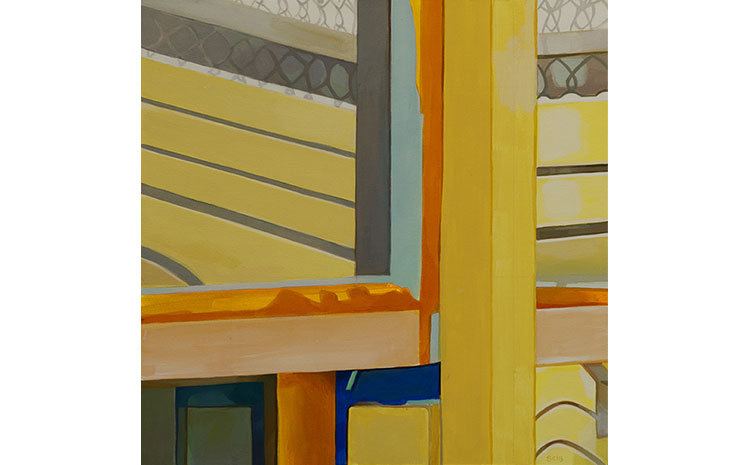
Susan Carson: A Visual Journey through Her Artistic Process
Susan Carson perceives her paintings as stepping stones, each work marking a moment of progress in her artistic journey. The experience of encountering a long-forgotten piece from someone’s collection or in storage elicits a sense of wonder, allowing her to view her own creations through a more objective lens.
Continuously exposed to art and architecture, Carson finds inspiration in the pursuit of her full potential. She possesses a keen ability to focus intently on elements of her surroundings and experiences, which, in turn, inform her artistic projects. One such instance occurred during her morning strolls down Commercial Street in Provincetown, where she became captivated by the reflections in storefront windows. This fascination with the convergence of multiple viewpoints and the emergence of a novel two-dimensional reality served as the driving force behind her “Reflections” series.
Carson has had various dedicated studio spaces throughout her career, but her current preference is for a workspace within her home. She remains adaptable as long as her workspace accommodates an easel, a laptop, a table, and storage. At present, her creative domain occupies one end of her living room, illustrating her ability to work effectively within the confines of her chosen space.
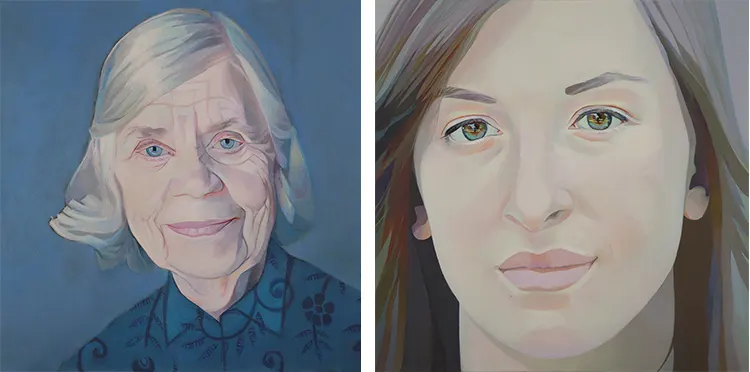
Susan Carson: Embracing Innovation in Artistic Creation
Susan Carson was captivated by an exhibition showcasing architectural landscape drawings, which prompted her to start her first abstract series titled “Biomorphic Geometrics”, in 2015. It might be helpful to add a date here to clarify when this shift occurred, as it was five years ago and could be a bit unclear. During this creative endeavor, Susan worked without constraints and explored new avenues of creativity that were absent in her previous portraiture work.
In her subsequent series titled “Abstract Realism: Objects, Faceless Portraits & Reflections,” Susan continued to investigate themes of identity and ambiguity. To distance herself from traditional portraiture, she chose to crop images of objects and window reflections, which confused the author of the original passage. However, Susan explains that she previously utilized a similar technique in her portraiture work, cropping her subjects down to their faces.
In her latest work, which remains in its nascent stages, graphic elements have assumed an even more dominant role. Carson is scrutinizing various aspects of artistic process, such as scale and reproduction, while also examining the visual and psychological impact of color and perspective. Compositions are meticulously refined in InDesign before she even lifts a paintbrush. Embracing innovation, she has devised her own color matching system and employs multiple graphics tools from earlier eras. Anticipation builds as we eagerly awaits her next artistic revelation.
